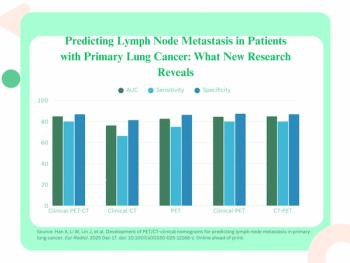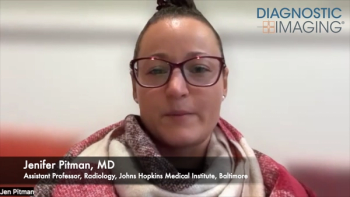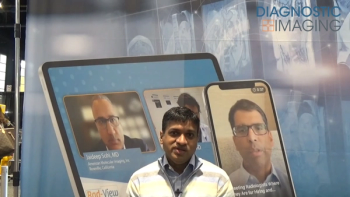
Prospective Study Shows Capability of CXR AI to Detect Early-Stage Lung Cancer in Young Patients and Never Smokers
In a recent interview, Hari Kishan Gonuguntla, M.D., discussed AI-powered evaluation of chest X-rays with the Lung Nodule Malignancy Score software and key findings from multinational prospective research presented at the recent ESMO Congress 2025 meeting.
In a new study presented at the ESMO Congress 2025 conference, researchers found that artificial intelligence (AI) offers significant utility for facilitating X-ray detection of early-stage lung cancer in patients who may fall outside of the realm of traditional lung cancer screening programs.
For the multinational prospective CREATE trial, researchers examined the use of Qure.ai’s Lung Nodule Malignancy Score (qXR-LNMS) software in a cohort of more than 700 patients drawn from facilities in Egypt, India, Mexico, Turkey and Indonesia. The study authors found that the qXR-LNMS software detected 96 percent of lung cancer cases that included a significant number of early-stage presentations and nodule detection in never smokers.
In a recent interview with Diagnostic Imaging, Hari Kishan Gonuguntla, M.D., discussed the key findings from the study.
“Actually, 57% were early-stage lung cancer patients in this group. … That's a very big thing and 50 percent of these patients which we identified (as) having high risk modules (were) never smokers. I think these are the two very important highlights of this study,” noted Dr. Gonuguntla, a lead consultant in interventional pulmonology at Yashoda Hospital in Hyderabad, India. “ … We also found (that) nearly nine to 10 percent of our patient group which had these high-risk nodules (fell) under the age group of less than 50 years.”
With incorporation of the qXR-LNMS software into the PACS of a health-care facility, Dr. Gonuguntla said the software can flag lung nodules in X-rays obtained for any reason, facilitating incidental detection and risk stratification in younger patients, never smokers, people with high environmental exposures and others who may not be eligible for traditional lung cancer screening programs. He emphasized that early detection with the software can have a significant impact.
“(For) each week of delay in lung cancer diagnosis or treatment, the mortality (risk) increases by 5 percent,” noted Dr. Gonuguntla.
(Editor’s note: For related content, see “
For more insights from Dr. Gonuguntla, watch the video below.
Newsletter
Stay at the forefront of radiology with the Diagnostic Imaging newsletter, delivering the latest news, clinical insights, and imaging advancements for today’s radiologists.



























